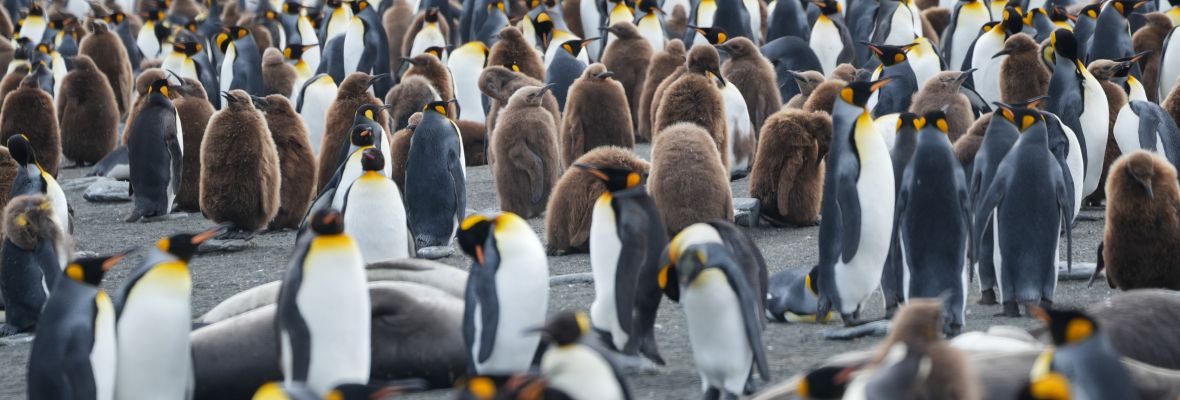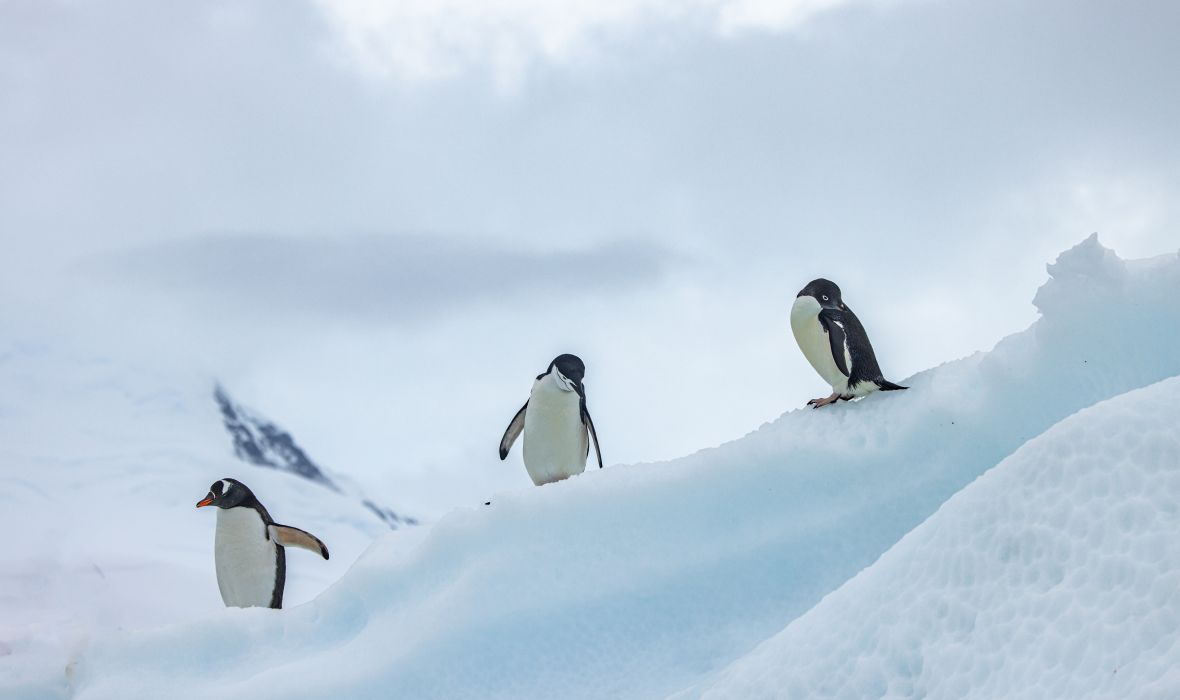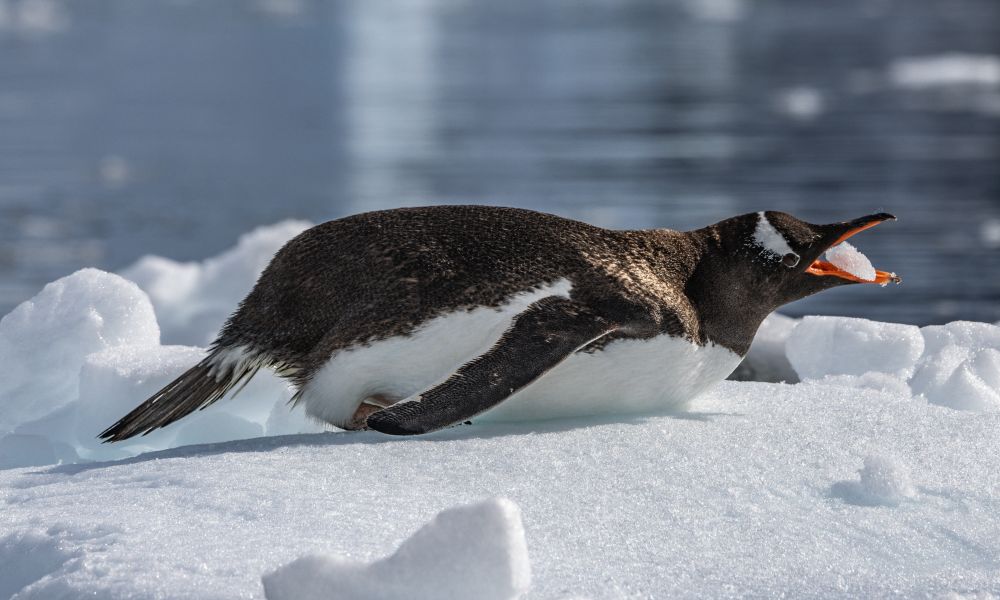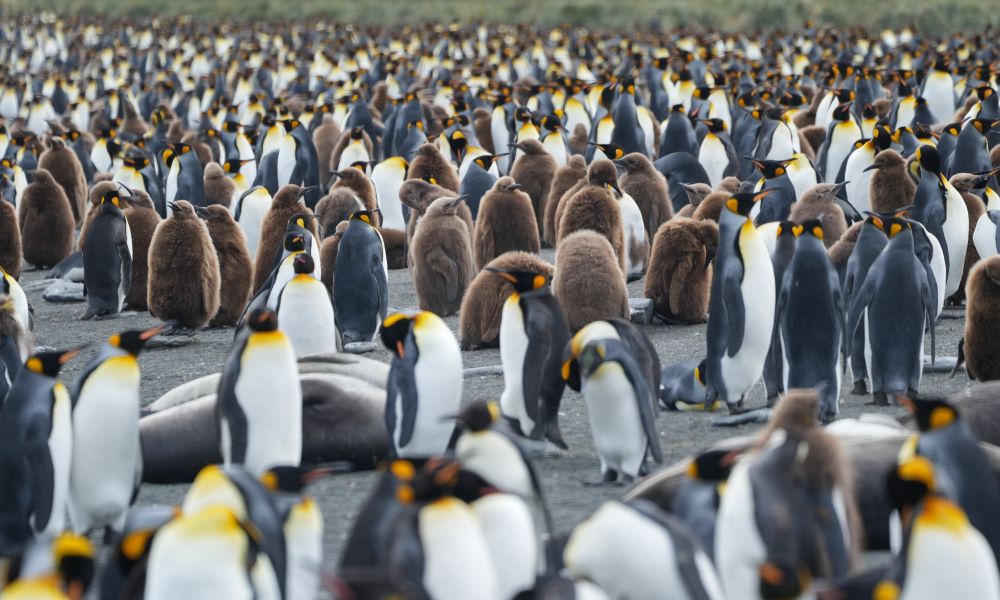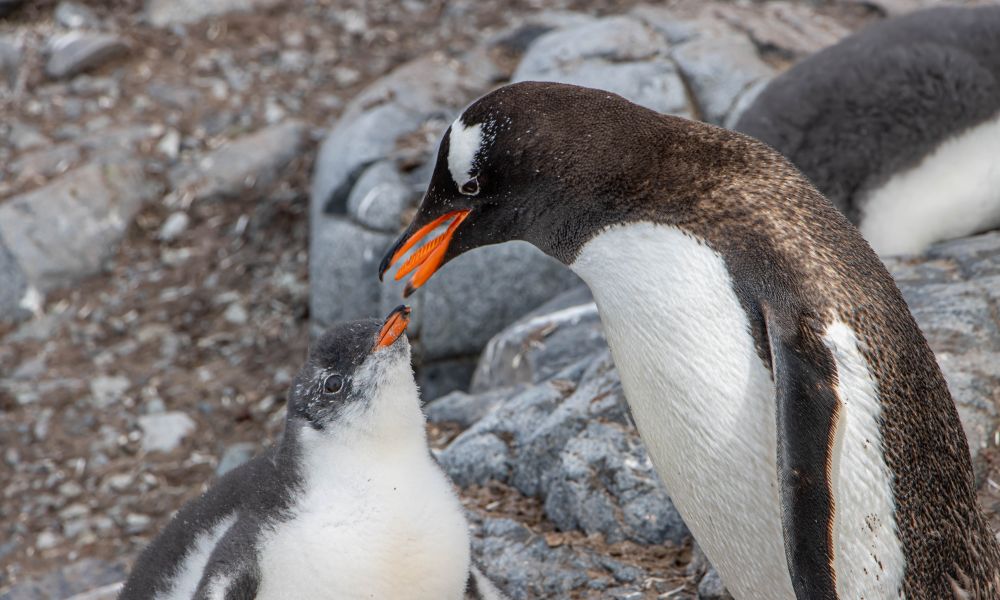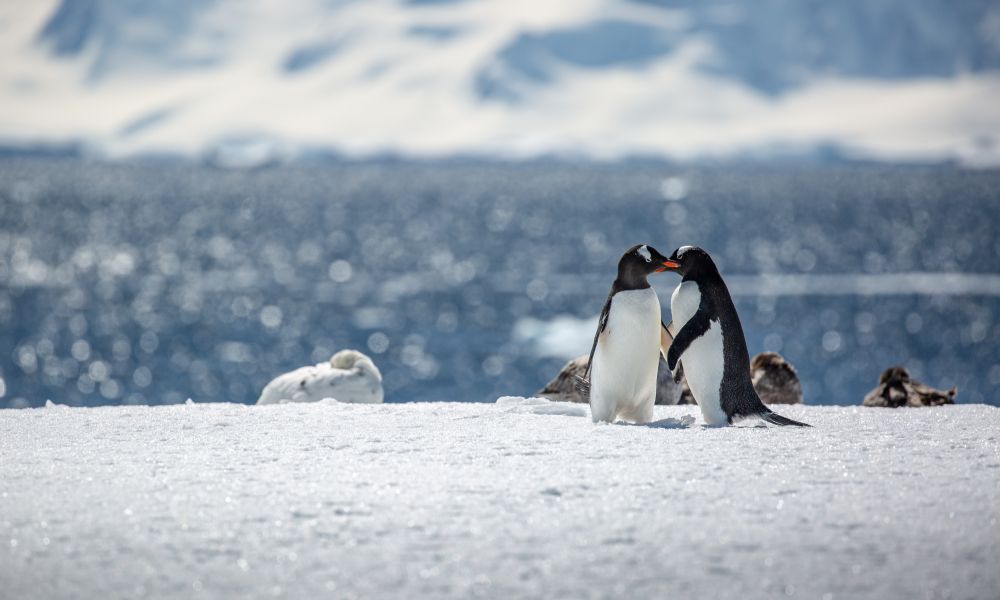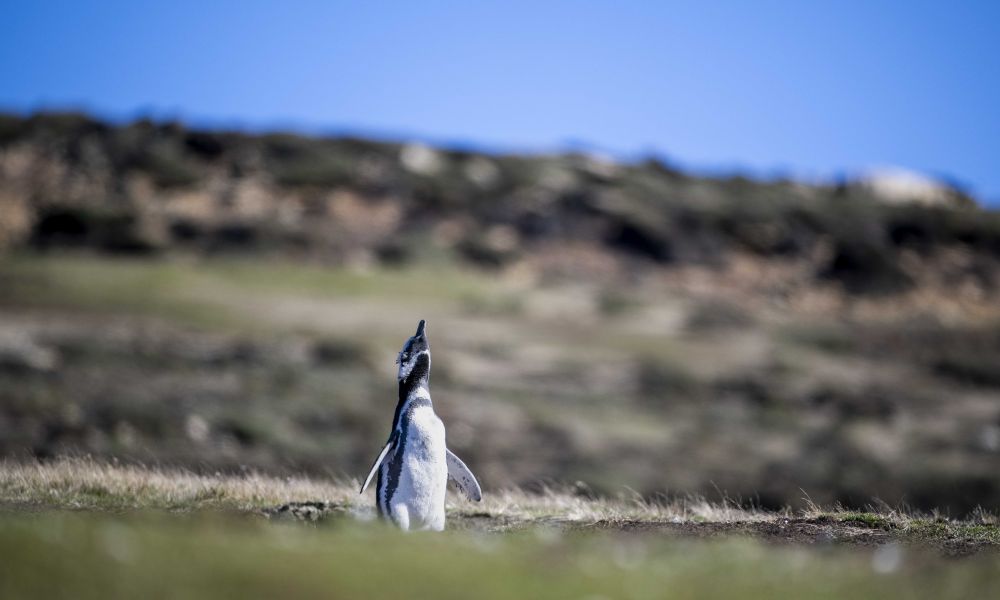Where do penguins live?
The penguin habitat is the most isolated continent in the southern hemisphere: Antarctica. Although most penguins live in Antarctica, these cute creatures can also be found at the southern tip of Africa, around New Zealand, on the southern coasts of Australia, along the coast of South America, and even on the Galapagos Islands in the Pacific Ocean, with the latter being the only place where penguins can be observed in the northern hemisphere.
What do penguins eat?
Penguins generally feed on fish, small cephalopods and crustaceans.
Are penguins birds or mammals?
In addition to the typical misconception, penguins belong to the bird category. They are flightless, possess flippers in place of wings, lay eggs, and have feathers.
Can penguins fly?
No, all species of penguins can’t fly. Instead, their wings have transformed into flat, rigid, and streamlined flippers that only move at the shoulder joint. This adaptation allows them to reach impressive speeds underwater. With this speed, they can leap several metres onto ice or rock slopes, and some can dive as deep as 600 meters for up to 20 min, travelling around 10,000 kilometres in the open sea within six months.
Do penguins have feathers?
Yes, penguins have short, hair-like feathers that are densely packed and kept water-resistant by an oily substance secreted from their skin.
Do penguins mate for life?
No, while certain species like the Emperor and Adélie penguins remain with the same mate during each breeding season, the majority of species opt for a different partner every year.
Do penguins have teeth?
No, but inside a penguin's mouth is its tongue, which is equipped with sharp, backwards-facing spines known as papillae. These spines assist in catching and swallowing their prey.
What is a group of penguins called?
Penguin colonies, or rookeries, is the term for a group of penguins. During the breeding season, these rookeries can contain thousands of penguins.
Do seals or sea lions eat penguins?
Yes, seals, especially leopard seals, are among the most well-known penguin predators. Killer whales, skuas, and giant petrels are also some of their biggest enemies. A common mistake is to think that polar bears eat penguins. However, the answer is definitely no! While most penguin species are spotted in the Southern Hemisphere, polar bears are entirely on the opposite side of the earth - the Arctic! It is impossible for them to encounter one another in the wild!
How long do penguins live?
It depends on the penguin species, but typically they live for around 15 to 20 years.
Are penguins endangered?
According to IUCN, some penguins, such as the African penguin and Galapagos penguin, are listed as ‘Endangered’, but other species such as King penguin, Gentoo penguin, and Adélie penguin, are classified as ‘Least Concern’.
How many species of penguins are there?
In total, there are 18 species of penguins in six genera from the Spheniscidae family. They constitute a very homogeneous and isolated group of birds but are closest to the tubenose family group, which includes the albatrosses.
Interested in discovering the different types of penguins that exist in the wild? Here is the complete list of all items!
1. King penguin
2. Emperor penguin
3. Adélie Penguin
4. Chinstrap Penguin
5. Gentoo Penguin
6. Little Penguin
7. Galapagos Penguin
8. Humboldt Penguin
9. Magellanic Penguin
10. African Penguin
11. Yellow-Eyed Penguin
12. Macaroni Penguin
13. Royal Penguin
14. Northern Rockhopper Penguin
15. Southern Rockhopper Penguin
16. Fiordland Penguin
17. Snares Penguin
18. Erect-crested Penguin



